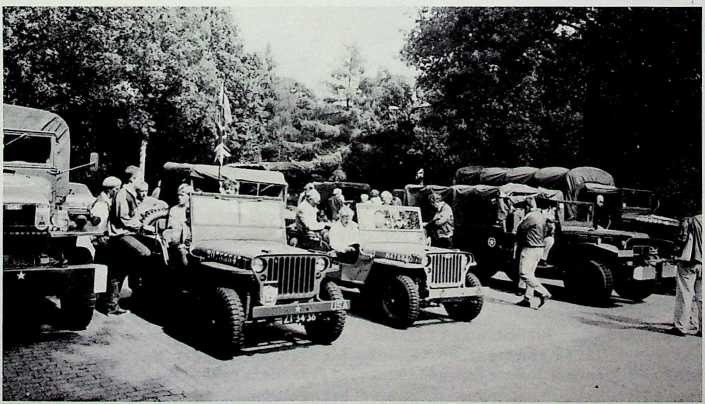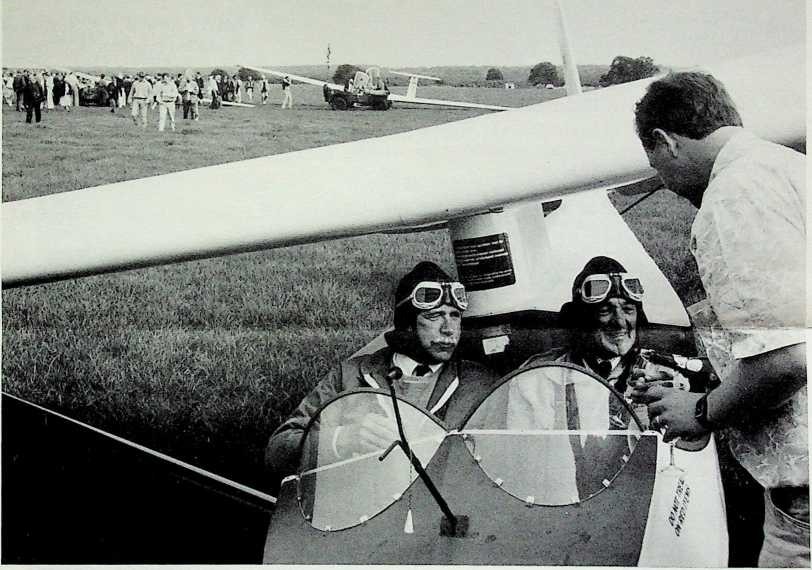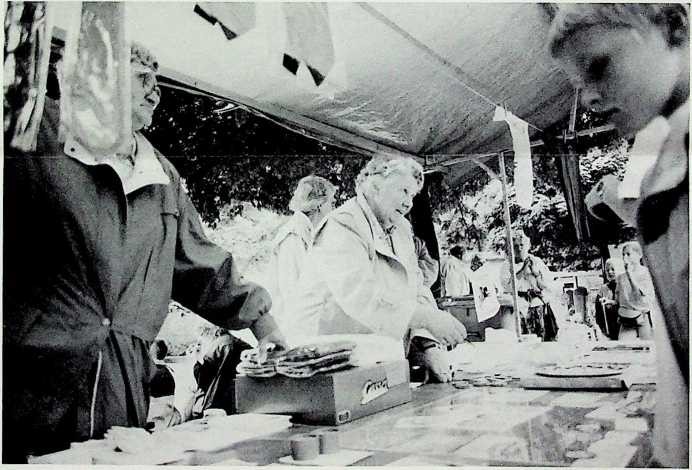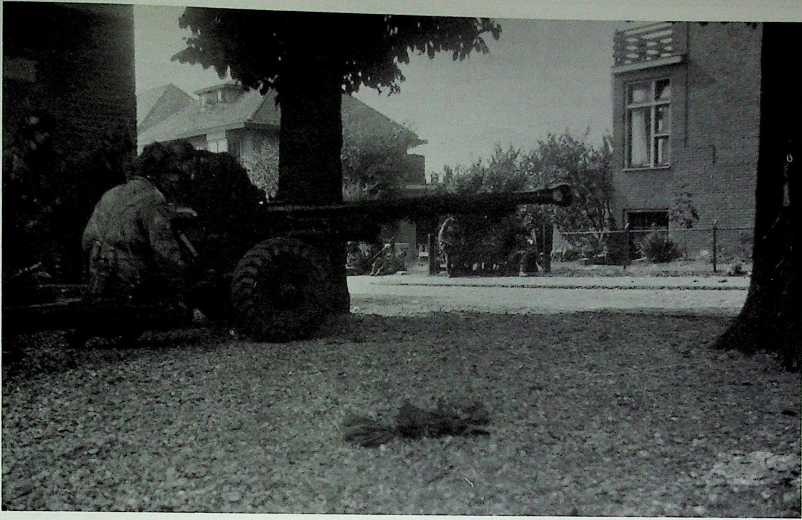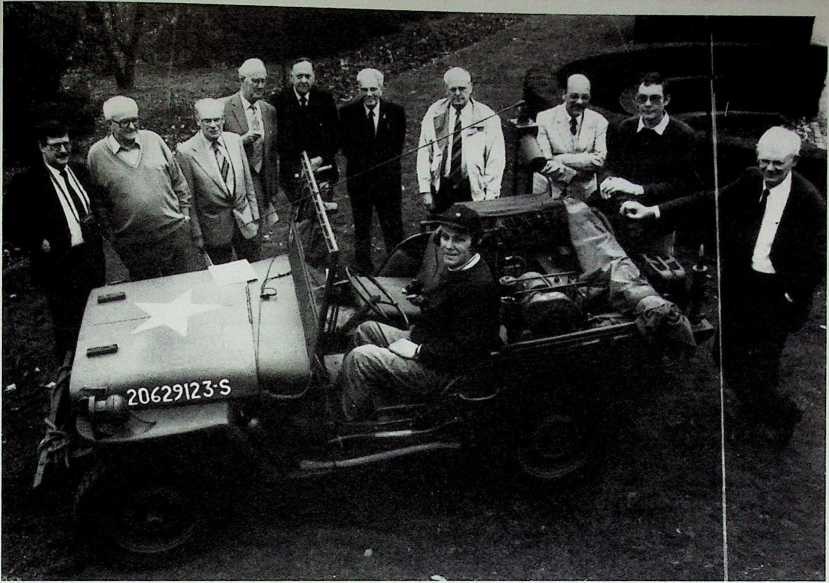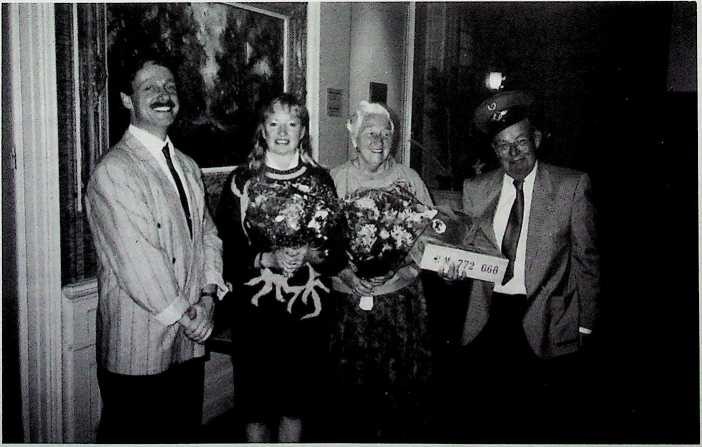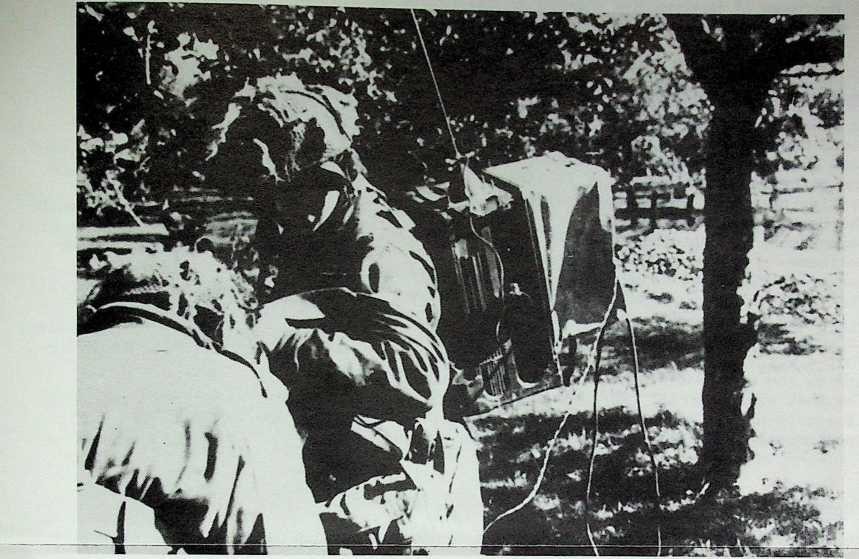FRIENDS OF THE AIRBORNE MUSEUM
Editors:
Drs. R.P.G.A. Voskuil
C. van Roekel
G.H. Maassen jr.
Newsletter No. 65, February 1997
Translated by Cathrien and Peter Clark
Representative in Great Britain: Mr. E.E. Shaw, 298 Totnes Road Paignton – Devon TQ4 7HD Tel. 0803-553616
17th General Members Meeting, 26 april 1997
The management invites you to attend the 17th General Members Meeting and AGM of the Society of Friends of the Airborne Museum Oosterbeek.
The meeting will be held in the Concert Hall, Rozensteeg 3, opposite the Old Church in Benedendorp, Oosterbeek (tel. 026-3332046), on Saturday 26 April next starting at 2 pm.
The agenda is as follows:
1. Opening
2. Minutes of the General Members Meeting of
27 April 1996
3. General Report 1996
4. Financial Report 1996
5. Audit Committee Report
6. Budget for 1997
7. Election of Officials
8. Appointment of reserve member to the Audit Committee
9. Questions
10. Closure of the meeting
Point 4: Financial reports and information will be sent separately to our Dutch members.

Theme day, 15 December 1996. Wybo Boersma shows uniform items from the collection to interested members during a tour of the Airborne Museum’s new store, (photo: Berry de Reus)
Point 5: The Audit Commission report will be available for perusal half an hour before the meeting begins.
Point 7: Mr R. Fennema has reached the end of his term of office and has decided not to stand for re-election. The management proposes Mr E. van der Meiden from Oosterbeek as candidate for this vacancy. Article 8 of the Statutes allows for the proposal of alternative candidates. In this case a written nomination should reach the secretary (C/O Utrechtseweg 232, 6862 AZ, Oosterbeek) at least 10 days before the meeting, signed by a minimum of 10 members and accompanied by a declaration of availability from the candidate. The candidate must be a Society member and an adult.
Society members will have the opportunity of exhibiting items from their personal collections of Battle of Arnhem material in one of the small rooms adjoining the main concert hall between the hours of 11 am and 1 pm. At the same time those interested will have the chance to exchange information. Anyone wishing to reserve ‘table space’ for their exhibits should get in touch with Eugene Wijnhoud, telephone 026-4610208.
Following the General Members Meeting the afternoon will be rounded off with the showing of a film about the Battle of Arnhem.
Annual Report, 1996
Management Mr A.A. Hofman stepped down during the General Members Meeting in 1996 and Mr E.Th.A. Wijnhoud from Arnhem was appointed in his place. Management met 11 times during the year and management delegations held various discussions with groups of members on policy matters.
Membership
We began the year with 1258 members. During 1996, 88 Dutch and British members were removed from the membership list due to non-payment of subscriptions.’ Sadly, 17. of our members died during the year. These were the ladies S. Pronk, E. van Niekerk and A. van Maanen-Mellema, and the gentlemen A. van Veelen, G.J. Perry, J.G. Christerus, R.C. Kift, J.F. Das, C.A. Komen, J.G. Schut, G. v.d. Top, W. Bell, C. Taylor, Ch. Rushton, J.J. Davidson, E. van den Dam and E. Small.
Membership increased by 103, which meant that we closed the year with membership virtually unchanged at 1256.
Newsletters
Thanks to the efforts of the editors, ably assisted amongst others by the group of members who are always on hand to get tilings ready for posting, we were again able to publish four Newsletters in 1996 together with associated Ministories.
Work groups
A number of members put themselves forward for membership of the ‘Activities and Events’ and ‘Publications’ work groups. These will be set up early in 1997. Disappointingly, the ‘Fund raising’ work group failed to get off the ground due, seemingly, to lack of interest.
Schools project
The Schools Project, intended to provide today’s youth with information about the Battle of Arnhem, continues to be a success. There is still great interest both here and abroad for this project, which was instigated by the Society in conjunction with the Airborne Museum and the Airborne Commemorations Foundation.
Gifts to the museum
In 1996 the Friends’ Society presented the Airborne Museum with gifts to the tune of almost 40,000 guilders. These concerned the following items:
1. An RAF aircrew oxygen mask and headset.
2. Equipment, war material and documents, purchased from Mr McAnelly and Mr Kloosterboer.
3. Racking for the new store in the cellar.
4. A substantial financial contribution for the building and equipping of the new storage space.
5. The background painting for the Signal Corps diorama.
ExcursionfTheme day
The excursion to England in April was an outstanding success. The number of people wishing to go on the trip far exceeded the number of places available, which is why a second excursion has been arranged for 2 to 6 April 1997.
The theme day in December attracted 100 members. In the morning there was a reception at the Airborne Museum and in the afternoon those present were treated to an illustrated lecture on the making of the film ‘A Bridge Too Far’.
New items for sale
Last year a collection of new sales items was introduced, partially in connection with the 50th Airborne Walk. The collection included a new Pegasus sticker, a Pegasus embroidery set and a number of miniature weapons such as the Sten gun, the Bren gun, the Lee Enfield and Lee Enfield Sniper, and the Thompson sub-machine gun. Sales are going extremely well.
Sales Stands
The Society was present at various events during 1996 with sales and promotional stands. The venues included the Dutch Royal Air Force Open Days at Twente, Resistance Day, The Airborne Walk, the Pegasus Walk, the Theme Day and the General Members Meeting. Sales resulted in 4146.50 guilders for the Society and 4807.25 guilders for the Museum. All in all 1996 was a year we can look back on with satisfaction.
(M. de Langen)
A message from the U.K. Representative
Although subscriptions became due in January this year, it is not too late for you to let me have them. This, of course, applies to those who have not yet sent them. Unfortunately, we are losing a great many of our subscribers, as one would have to expect in this age group. The ‘Last Post’ gets longer and longer as the years proceed. May I therefore thank those who have contributed and I look forward to hearing from those who are about to.
With kind regards, Ted Shaw. U.K. Rep.
Second excursion to England, 2 to 6 April 1997
The second 5-day excursion to England will take place from Wednesday 2 April to Sunday 6 April 1997. Thanks to the kind cooperation of The Parachute Regiment we shall once more be welcome in the quarters and NCOs’ mess at Browning Barracks in Aidershot. This will be the base for our various trips.
The programme is essentially the same as for the first excursion with one exception. This time, the first day-trip will be a visit to the legendary airfield at Duxford. This airfield, where many of the buildings are exactly as they were during the Second World War, has been transformed into a gigantic museum. All manner of military aircraft are exhibited in the enormous hangars, and in one of them one can watch restoration work being carried out on the machines. Also of great interest is the original ‘Operations Room’ from where this sector was controlled during the Battle of Britain, hr addition to the old aircraft on display the Imperial War Museum has a separate hall where all the large, heavy material too large for its London location is on show.
On the second day we spend the morning at the Airborne Forces Museum in Aidershot followed by a visit to the Museum of Army Flying at Middle Wallop in the afternoon, where, among the exhibits, are a number of gliders of The Glider Pilot Regiment. Saturday morning is earmarked for a visit to the Imperial War Museum in London, with the afternoon being given over to shopping and sightseeing. We travel by luxury coach, crossing the channel via the Channel Tunnel on board ‘Le Shuttle’. On the way a short stop will be made at the small Belgian town of Ypres, a famous World War 1 location. Meanwhile, those who were unlucky last year have
been given the opportunity of taking part in this second excursion. Most have taken the opportunity but there are still a few spare places.
Application forms can be requested by ‘phone or letter from C. van Roekel, Benedendorpsweg 119, 6862 WE, Oosterbeek, telephone 026-3333261.
The returned forms will be dealt with on a ‘first come, first served’ basis. You can also indicate on the form if you wish to be considered for a ‘last minute’ place in the event of someone dropping out at the eleventh hour.
Due to the current strength of the pound the excursion price has been set this time at 450 guilders a head. This covers the bus journey, ‘Le Shuttle’ fare, breakfast, lunch and dinner, all entry charges, travel insurance and a comprehensive tour guide. The guide, containing all details of the places to be visited plus other important information, will be sent to all participants.
Cancellation after 31 March will incur certain administration costs.
(C. van Roekel)
Walking tour on 7 June next
A walking tour has been organised for Saturday June 7 1997 taking in the western limits of the ‘perimeter’, the horseshoe-shaped area in Oosterbeek defended by the British and the Poles up to the end of the battle. Further information will appear in the next Newsletter.
New edition of ‘Who was Who’
In 1992 the first edition appeared of ‘Who was Who during the Battle of Arnhem’, compiled by Chris van Roekel. This ‘Order of Battle of Airborne Officers who fought at Arnhem in 1944’ booklet was so popular that it was sold out in no time. Last December a second, revised edition was published. Warrant Officers are now included in this new edition as well as the decorations awarded for and as a result of ‘Arnhem’. There are also a number of new illustrations, including colour plates of the awarded decorations.
The new ‘Who was Who’ is available at the Airborne Museum, price 30 guilders.
‘Unexpected Guests’ exhibition
An exhibition will be held in the Airborne Museum from 26 April up to and including 2 November 1997 on the role of the hotels and boarding houses in Oosterbeek during the Battle of Arnhem. This subject has been chosen to correspond with the 100-year existence of the VVV (Tourist Office) in the municipality. Many years ago the village of Oosterbeek and surroundings became a spot for long or short-stay holidaymakers, and from the very beginning hotels and boarding houses abounded. A number of these buildings played a part during tire Battle of Arnhem, both for the British and the Germans, and this exhibition attempts to give a picture of those times. Not much is now known of the boarding houses in particular and very little material about them is to be found. The organisers hope that more information on the subject will come to light during the exhibition, any such information then being incorporated.
(W. Boersma)
Special events
The Airborne Museum will once again be taking part in the National Museum Weekend to be held on 12 and 13 April 1997. This year the weekend has a ‘walking’ theme. Participating museums will be setting out a walking route in their vicinities which visitors can follow. During the weekend in question the Airborne Museum will be reducing admission by 1 guilder. Visitors to the museum will receive a free route map of the ‘Perimeter Walk’. This is a walk of 4 kilometres, starting at the museum and running through the area between the museum and the Rhine, passing on the way various points of note from the battle, among which the small church in Lower Oosterbeek. At 12, 2 and 4 pm on both Saturday and Sunday a guide will be present to lead the walk and provide explanations on the way. Of course one can walk the route independently at any time suitable to oneself. The museum is looking for people who are prepared to act as guides and for someone willing to take on the organisation of the two days.
The whole month of April has in fact been designated a ‘walking month’ by tire Tourist Offices. On the three Sundays in April outside of the Museum Weekend, a guided Perimeter Walk can be made starting at 2 pm. For these a route map can be obtained from the Airborne Museum ‘Hartenstein’ or from the Tourist Office, price 2.75 guilders. Guides are also requested for these walks. Volunteers to and information from W. Boersma, telephone 026-3337710 (museum) or 0318-639633 (private).
‘With Spanners Descending’
This is the title of a book recently published by Bluecoat Press, Liverpool, on the history of the ‘Royal Electrical and Mechanical Engineers’ (REME) in the 1st Airborne Division during the period 1942 to 1945. in it the author, Mr Joe Roberts, describes a military unit which up to now has received little recognition but which was of vital importance to the division. As a writer Mr Roberts was in a unique position because, as Orderly Room Clerk, he served with the 1st Airborne Divisional Workshop (REME) from its inception up to its disbandment. This allowed him virtually unlimited access to all manner of documents, such as operational orders, military plans and lists of promotions and transfers. His administrative talents are clearly shown in the excellent way the book is laid out both historically and chronologically.
The personal stories of the various REME veterans, in particular those of Bill Nickle, Ted Sullivan and Terry Criddle, are especially interesting.
In my view the book’s only weak point is the scarcity of technical detail. If this aspect had received more attention the essential role of the REME in the British army would have been made clearer. As excuse one could say that this is an historical summary, not a technical dissertation.The title is very well chosen and could be freely translated as ‘Airborne Vakmensen’ (Airborne Tradesmen). The book also lifts that part of tire veil surrounding the somewhat mysterious designation, REME. This makes it a must for anyone interested in the Battle of Arnhem.
‘With Spanners Descending’ comprises 134 pages, 40 photographs, and a number of appendices at the back. The book is in English and costs 9 pounds 99 in Britain. It is also available from the Airborne Museum in Oosterbeek at 32.50 guilders.
(Don A. Jacobs)
Appeal
The sister of a British soldier killed at Arnhem would like any information concerning her brother, Bombardier L.R. Cook. This artillery man was attached to the 1st Airlanding Anti Tank Battery, Royal Artillery, but to which Troop is not known. He died on 20 September 1944 and lies in an unknown grave.
His photograph appears in this Newsletter. Who can help this lady with information about Bombardier Cook?
Reactions please to the Newsletter editors. (Eugene Wijnhoud)

Bombardier L.R. Cook of the 1st Airlanding Anti Tank Battery R.A., who was killed on 20 September 1944. His grave is unknown. Who can provide his family with information as to his fate?
(photo: Eugene Wijnhoud collection)
‘Arnhem Venture’
One of the soldiers who took up the pen to record his adventures on returning to England from Arnhem at the end of September 1944 was Ron Kent. Sergeant Kent belonged to the 21st Independent Parachute Company, the unit whose main task was to mark the dropping and landing zones and which later played a full part in the fighting in Oosterbeek. His detailed account, written in 1944, is now available in printed form. It consists of 55 ringbound, photocopied pages with a plastic front cover, and is illustrated with a few photographs and maps. ‘Arnhem Venture’ can be ordered from Derek Duncan, Heather Way, Lower Bourne, Farnham, GU109 3HG, England. It costs 7 pounds in Britain, 10 pounds elsewhere, including postage and packing. Cheques should be made payable to ‘The Airborne Forces Charities’.
43rd (Wessex) Brigade and Association
In Ministory 46, Major Douglas Goddard MBE told of his experiences as a lieutenant with the 112th (West Somerset Yeomanry) Field Regt R.A., a unit of the 43rd (Wessex) Division at the Battle of Arnhem. The division was involved in all major actions from the Normandy invasion up to the end of hostilities in May 1945. By that time, when the division had reached the area around Cuxhaven in Germany, it had covered 800 miles and lost 12,000 men during the period from June 1944.
At our request Mr Goddard has provided further relevant information.
The division was disbanded in 1967 but, 17 years later, the name was resurrected with the formation of the 43rd (Wessex) Brigade, a component of the 3rd (UK) Division. As with all military emits in the United Kingdom, the brigade has a strong regional flavour, the region comprising Devon, Cornwall, Dorset, Somerset, Avon, Gloucestershire, Wiltshire (part of), the Channel Islands and the Isles of Scilly. The brigade is made up of the Royal Wessex Yeomanry, 4th Devon and Dorset, 6th Light Infantry, 243 (Wessex) Field Hospital RAMC and 43rd (Wessex) Provost Unit; it is stationed at Wyvern Barracks in Exeter.
From ancient times the Wyvern (a two-legged winged dragon) was depicted on the coats-of-arms and standards of the kings of Wessex, in the distant past a kingdom in the south west of England (the West Country). Since then this mythical beast has become a symbol for all warriors and military men from this part of Britain. It is therefore logical that the military unit bearing the name of this ancient kingdom should have the Wyvern as its emblem. Compared to other similar associations, the 43rd Wessex Association only recently came into being, namely on 14 September 1995. Membership, at the moment standing at some 300, is drawn from former soldiers of the division as well as from members of today’s brigade.
The most important aims are the establishment of a bond between the old division and the present-day brigade, ensuring that the history, memorabilia and traditions of the Wessex Division are not lost, and the provision of a veterans’ organisation for those whose military units have been disbanded since the Second World War and for whom no old-comrades clubs exist.
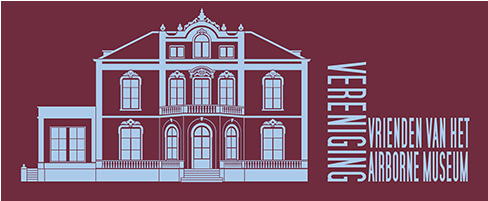




 Chairman J. Smits thanks retiring treasurer R. Fennema during the AGM on 26 April 1997for all the work he has done for the Society.
Chairman J. Smits thanks retiring treasurer R. Fennema during the AGM on 26 April 1997for all the work he has done for the Society.
 A short service was held in the Airborne Cemetery, Oosterbeek on 5 May 1997 at the grave of Dutch Commando August Bakhuis Roozeboom. His grave had just been given a new headstone.
A short service was held in the Airborne Cemetery, Oosterbeek on 5 May 1997 at the grave of Dutch Commando August Bakhuis Roozeboom. His grave had just been given a new headstone.








